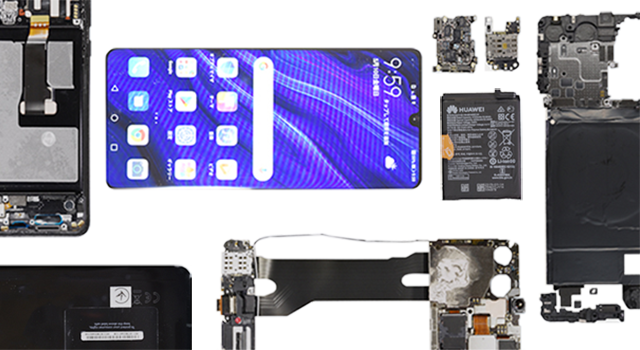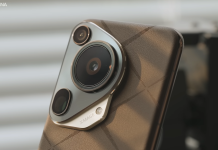In the bitter trade war between two powerful countries — the USA and China, it’s Huawei that’s stuck in the middle and is seeing its business facing the heat. Because of the ban issued on Huawei by the United States, Huawei Technologies will now have to find new suppliers for 15 of the higher value parts of its flagship handset.
Teardown of Huawei’s recently launched flagship smartphone, Huawei P30 Pro shows that while U.S. content accounts for 1 percent of the parts, those components add up to roughly 16 percent of the cost of all components. It uses 15 parts from the US while the phone consists of 1,631 parts.

Additionally, around 62 percent of the phone’s parts in terms of cost were produced by companies outside China, according to the report from Fomalhaut Techno Solutions, a Tokyo research outfit.
The parts coming from the U.S. include communication semiconductors from Qorvo, the North Carolina-based chipmaker, DRAM from Micron Technology, and a protective cover glass from Corning, a New York technology materials group, among others.
Huawei, which dominates the Chinese smartphone market, was aiming to become the world’s largest smartphone maker by the end of 2020. But the company has now given up that ambition as it is caught in the middle of the US-China Trade War.
The company has also slashed its sales expectations for the next two years by $30 billion, setting forecasts at roughly $100 billion in 2020. Huawei founder and CEO Ren Zhengfei admitted that constraints imposed on the company’s U.S. suppliers by the Trump Administration had taken a heavy toll on the group.
As per the reports, Huawei has stocked up on parts but — when its inventories dry up — the company will have to find alternative sources. But some companies have found a way around Trump’s order and have resumed supplying components to Huawei.
Huawei’s isn’t backing down despite going through the worst time possible. The company keeps on launching new smartphones and its own mobile operating system, which supports Android app compatibility, is ready to go public by the end of September or October. Other Chinese brands participated in testing the OS with Huawei and it was claimed to be 60% faster than Android. If every Chinese brand picks up HongMeng OS instead of Android, it could be a major threat to Google.
(Source)







